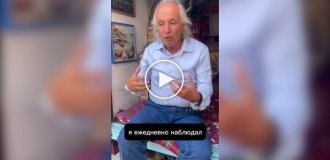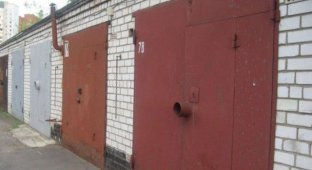You've seen this fence with diamonds hundreds of times, but you had no idea what its history hides.
Each of us has seen this fence. It consists of a reinforced concrete frame with a concrete panel, which is reinforced with wire mesh. It is often placed to fence off a site for new construction. In addition, it is also used by military units. It has long become a symbol of Soviet and post-Soviet constructivism.
[img]https://cn15.nevsedoma.com.ua/photo/13/1332/301_files/vy-videli-etot-zabor-s-rombikami-sotni-raz-no-dazhe-ne-d_007.jpg[/ img]
It seems to be an ordinary concrete fence with protruding diamonds. We all stopped paying attention to them a long time ago. But it turns out that the fence has a name, and the architect who invented it is even alive and well.
In the early 1970s, the chief architect of Mosgorstroymaterialy, Boris Rakhman, was engaged in “design for industry.” One of his responsibilities was to create a new type of fence. Boris worked on this design for several months. Rahman presented three different designs of fences for industrial facilities to his superiors.
[img]https://cn15.nevsedoma.com.ua/photo/13/1332/301_files/vy-videli-etot-zabor-s-rombikami-sotni-raz-no-dazhe-ne-d_005.jpg[/ img]
The architect himself liked his design, which resembled masonry. However, the management decided to adopt the simplest of the options that Rahman proposed. The fence was named “PO-2”.
[img]https://cn15.nevsedoma.com.ua/photo/13/1332/301_files/vy-videli-etot-zabor-s-rombikami-sotni-raz-no-dazhe-ne-d_006.jpg[/ img]
The Soviet inventor believes that everyone liked his idea with the protrusion. Dust and dirt are easily washed off from them. Moreover, even rain can do this. In addition, the fence has a high noise barrier, which is ideal for this type of facility.
[img]https://cn15.nevsedoma.com.ua/photo/13/1332/301_files/vy-videli-etot-zabor-s-rombikami-sotni-raz-no-dazhe-ne-d_003.jpg[/ img]
Soon the fence was put on a conveyor belt. It massively invaded all the republics of the Soviet Union. Boris was even rewarded for his development. The architect received as much as fifty rubles.
[img]https://cn15.nevsedoma.com.ua/photo/13/1332/301_files/vy-videli-etot-zabor-s-rombikami-sotni-raz-no-dazhe-ne-d_004.jpg[/ img]
Rahman is now seventy-five years old. As soon as the opportunity presented itself, he emigrated to the United States. He has lived in America for almost forty years. When he left the USSR, he was not allowed to take his working drawings with him.
[img]https://cn15.nevsedoma.com.ua/photo/13/1332/301_files/vy-videli-etot-zabor-s-rombikami-sotni-raz-no-dazhe-ne-dogad.jpg[/ img]
He says that he doesn’t miss his homeland at all. He now speaks English better than Russian. In the USA he still works as an architect. He was involved in the design of restaurants, supermarkets, and residential buildings. Then I was able to open my own business. Now lives in New York.
[img]https://cn15.nevsedoma.com.ua/photo/13/1332/301_files/vy-videli-etot-zabor-s-rombikami-sotni-raz-no-dazhe-ne-d_002.jpg[/ img]
By the way, while already here, he also received a small bronze medal for that same “PO-2”. Boris Rakhman is surprised that his brainchild is still so popular in the former Soviet countries. When I found out that they were banned in Moscow, I only supported this order of the capital’s authorities.






















